Why you can trust Credit Card
More Info
On this page
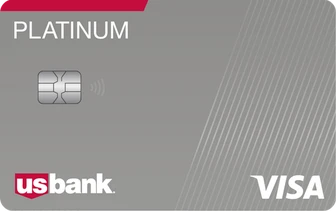
BEST FOR CUSTOMIZABLE REWARDS
U.S. Bank Cash+® Visa Signature® Card

Reward rate
5
5% cash back on your first $2,000 in eligible net purchases each quarter on the combined two categories you choose.
3
5% cash back on prepaid air, hotel and car reservations booked directly in the Rewards Travel Center.
-1
1% cash back on all other eligible purchases.
1
1% cash back on all other eligible purchases.
Intro offer
$200 bonus
Annual fee
$0
Regular APR
16.74% - 26.74% (Variable)
Recommended credit
Good to Excellent (670 - 850)
Pros
- Multiple rotating and fixed bonus categories, which can make it easier to earn rewards quickly
- The $200 sign-up bonus (after spending $1,000 within the first 120 days of account opening) increases the card’s first-year value
Cons
- The $2,000 combined spending cap each quarter for your chosen 5% categories limits your ability to rake in rewards
- Having to track and enroll in rotating categories can be a hassle for some
- New! $200 bonus after spending $1,000 in eligible purchases within the first 120 days of account opening.
- 5% cash back on your first $2,000 in combined eligible purchases each quarter on two categories you choose
- 5% cash back on prepaid air, hotel and car reservations booked directly in the Rewards Travel Center
- 2% cash back on one everyday category, like Gas Stations/EV Charging Stations, Grocery Stores or Restaurants
- 1% cash back on all other eligible purchases
- 0% Intro APR on purchases and balance transfers for the first 15 billing cycles. After that, a variable APR currently 16.74% – 26.74%
- No Annual Fee
- Pay over time by splitting eligible purchases of $100+ into equal monthly payments with U.S. Bank ExtendPay™ Plan.
- Terms and conditions apply.
ADDITIONAL FEATURES
Purchase intro APR
0% Intro APR on purchases for the first 15 billing cycles.
Balance transfer intro APR
0% Intro APR on balance transfers for the first 15 billing cycles.

BEST FOR PERSONAL LOAN ALTERNATIVE
Upgrade Cash Rewards Elite Visa®

Reward rate
2.2
Earn 2.2% unlimited cash back on card purchases every time you make a payment
Intro offer
$200
Annual fee
$0
Regular APR
8.99% - 29.99% (Variable)
Recommended credit
Good to Excellent (670 - 850)
Pros
- You won’t need to use your reward earnings to offset any maintenance fees.
- You’ll earn a bonus after you open a Rewards Checking account and make three purchases with the card in your first 60 days.
Cons
- The high end APR range is well above average. That could prove costly if you don’t have the credit needed to qualify for the lower range and you end up carrying a balance.
- You won’t get a break on interest if you carry a balance since there are no intro APR offers on purchases or balance transfers.
- $200 bonus on your Upgrade Card after opening a Rewards Checking account and making 3 debit card transactions within 60 days.*
- New Feature: Pay your balance in full early each month and avoid interest with EarlyPay.
- Earn 2.2% unlimited cash back on card purchases every time you make a payment
- See if you qualify in seconds with no impact to your credit score
- No Fees – $0 annual fees, $0 activation fees, $0 maintenance fees
- Combine the flexibility of a card with the low cost and predictability of a loan
- Access to a virtual card, so you can start earning while you wait for your card to arrive in the mail.
- Contactless payments with Apple Pay® and Google Pay™
- Mobile app to access your account anytime, anywhere
- Enjoy peace of mind with $0 Fraud liability
- *To qualify for the $200 welcome bonus, you must open and fund a new Upgrade Rewards Checking Account and make 3 debit card transactions within 60 days of your Upgrade Card account opening. The bonus credit will be posted to your Upgrade Card as a rewards credit within 1-2 billing periods following the third debit transaction on your Rewards Checking account. Your Upgrade Card must be in good standing to receive the bonus.
ADDITIONAL FEATURES
Purchase intro APR
N/A
Balance transfer intro APR
N/A
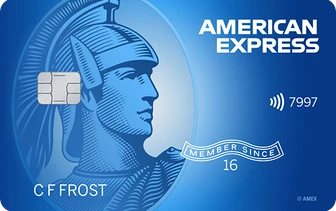
BEST FOR GAS
Blue Cash Everyday® Card from American Express

Reward rate
3
3% Cash Back at U.S. supermarkets on up to $6,000 per year in purchases, then 1%.
1
New! 3% Cash Back on U.S. online retail purchases, on up to $6,000 per year, then 1%.
-1
1% Cash Back on other purchases.
1
1% Cash Back on other purchases.
Intro offer
$200
Annual fee
$0
Regular APR
16.24%-27.24% Variable
Recommended credit
Good to Excellent (670 - 850)
Pros
- It carries one of the best combined cash back rates available at no annual fee at U.S. gas stations and U.S. supermarkets. Those two categories make up a big chunk of the average person’s budget.
- You can earn $7 back per month on The Disney Bundle streaming package, which includes Disney+, Hulu, and ESPN+ (each month you spend $13.99 or more on an eligible subscription, terms apply). To earn that much back in a month via the card’s 3 percent categories, you’d typically need to spend over $230.
Cons
- You’ll only earn 3 percent cash back on your first $6,000 in annual spending in each of the card’s bonus categories (then 1 percent). While that’s a high limit, it could hold you back if you’re sharing an account across multiple households.
- The card carries a 2.7 percent foreign transaction fee, so it’s not a good option if you’re looking for a single rewards card you can use at home and abroad.
- Earn a $200 statement credit after you spend $2,000 in purchases on your new Card within the first 6 months.
- No Annual Fee.
- Balance Transfer is back! Enjoy 0% intro APR on purchases and balance transfers for 15 months from the date of account opening. After that, 16.24% to 27.24% variable APR.
- 3% Cash Back at U.S. supermarkets on up to $6,000 per year in purchases, then 1%.
- New! 3% Cash Back on U.S. online retail purchases, on up to $6,000 per year, then 1%.
- 3% Cash Back at U.S. gas stations, on up to $6,000 per year, then 1%.
- Get $7 back each month after using your Blue Cash Everyday® Card to spend $13.99 or more each month on an eligible subscription to The Disney Bundle, which includes Disney+, Hulu, and ESPN+. Enrollment required.
- Terms Apply.
ADDITIONAL FEATURES
Purchase intro APR
0% on purchases for 15 months
Balance transfer intro APR
0% on balance transfers for 15 months
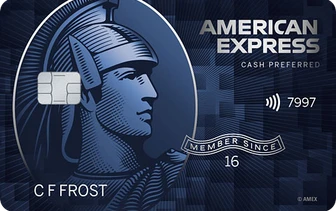
BEST FOR GROCERIES
Blue Cash Preferred® Card from American Express

Reward rate
6
6% Cash Back at U.S. supermarkets on up to $6,000 per year in purchases (then 1%).
1
6% Cash Back on select U.S. streaming subscriptions.
3
3% Cash Back at U.S. gas stations
0
3% Cash Back at U.S. gas stations
1
1% Cash Back on other purchases
Intro offer
$350
Annual fee
$95
Regular APR
16.24%-26.24% Variable
Recommended credit
Good to Excellent (670 - 850)
Pros
- The base reward program is uber-lucrative, making this card a good choice for people looking for long-term value.
- You don’t have to keep track of rotating spending categories or enrollment deadlines.
Cons
- There is no intro APR offer on balance transfers.
- You won’t earn the extra rewards for grocery shopping at major superstores and wholesale clubs, as those don’t count as U.S. supermarkets.
- Earn a $350 statement credit after you spend $3,000 in purchases on your new Card within the first 6 months.
- Buy Now, Pay Later: Enjoy $0 intro plan fees when you use Plan It® to split up large purchases into monthly installments. Pay $0 plan fees on plans created during the first 12 months after account opening. Plans created after that will have a fixed monthly plan fee up to 1.33% of each purchase amount moved into a plan based on the plan duration, the APR that would otherwise apply to the purchase, and other factors.
- Low intro APR: 0% intro APR for 12 months on purchases from the date of account opening, then a variable rate, 16.24% to 26.24%.
- 6% Cash Back at U.S. supermarkets on up to $6,000 per year in purchases (then 1%).
- 6% Cash Back on select U.S. streaming subscriptions.
- 3% Cash Back at U.S. gas stations and on transit (including taxis/rideshare, parking, tolls, trains, buses and more).
- 1% Cash Back on other purchases.
- Cash Back is received in the form of Reward Dollars that can be redeemed as a statement credit.
- $95 Annual Fee.
- Terms Apply.
ADDITIONAL FEATURES
Purchase intro APR
0% on purchases for 12 months
Balance transfer intro APR
N/A
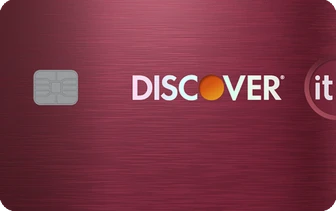
BEST FOR ROTATING CASH BACK CATEGORIES
Discover it® Cash Back

Reward rate
5
Earn 5% cash back on everyday purchases at different places each quarter like Amazon.com, grocery stores, restaurants, gas stations and when you pay using PayPal, up to the quarterly maximum when you activate.
1
Plus, earn unlimited 1% cash back on all other purchases – automatically.
Intro offer
Cashback Match™
Annual fee
$0
Regular APR
13.49% - 24.49% Variable
Recommended credit
Good to Excellent (670 - 850)
Pros
- Discover will match the cash back you earn at the end of the first year.
- There are a few cash back redemption options, including credit to your account and donations.
Cons
- You must enroll to take advantage of the bonus categories each quarter.
- There is a spending limit on your highest cash back category each quarter ($1,500 in combined purchases per quarter).
- Intro Offer: Unlimited Cashback Match – only from Discover. Discover will automatically match all the cash back you’ve earned at the end of your first year! There’s no minimum spending or maximum rewards. You could turn $150 cash back into $300.
- Earn 5% cash back on everyday purchases at different places each quarter like Amazon.com, grocery stores, restaurants, gas stations and when you pay using PayPal, up to the quarterly maximum when you activate. Plus, earn unlimited 1% cash back on all other purchases – automatically.
- New! Discover helps remove your personal information from select people-search websites. Activate by mobile app for free.
- Every $1 you earn in cash back is $1 you can redeem.
- New Intro APR: Get a 0% intro APR for 15 months on purchases. Then 13.49% to 24.49% Standard Variable Purchase APR applies, based on credit worthiness.
- No annual fee.
ADDITIONAL FEATURES
Purchase intro APR
0% for 15 months
Balance transfer intro APR
0% for 15 months
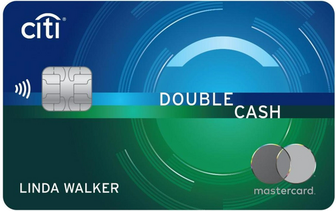
BEST FOR UP TO 2% CASH BACK
Citi® Double Cash Card

Reward rate
2
Earn 2% on every purchase with unlimited 1% cash back when you buy, plus an additional 1% as you pay for those purchases.
Intro offer
$200 Cash Back
Annual fee
$0
Regular APR
16.24% - 26.24% (Variable)
Recommended credit
Good to Excellent (670 - 850)
Pros
- You can convert your cash back earnings to Citi ThankYou points when paired with a card like the Citi Premier® Card, which can be redeemed for travel, gift cards and more.
- There are no spending category restrictions or rotating categories
Cons
- Your rewards can expire with this card if you don’t use it for a year.
- The sign-up bonus spending requirement is higher than you’ll find on many no-annual-fee cash back cards.
- Earn 2% on every purchase with unlimited 1% cash back when you buy, plus an additional 1% as you pay for those purchases.
- For a limited time, earn $200 cash back after spending $1,500 on purchases in the first 6 months of account opening.
- Balance Transfer Only Offer: 0% intro APR on Balance Transfers for 18 months. After that, the variable APR will be 16.24% – 26.24%, based on your creditworthiness.
- Balance Transfers do not earn cash back. Intro APR does not apply to purchases.
- If you transfer a balance, interest will be charged on your purchases unless you pay your entire balance (including balance transfers) by the due date each month.
- There is an intro balance transfer fee of 3% of each transfer (minimum $5) completed within the first 4 months of account opening. After that, your fee will be 5% of each transfer (minimum $5).
ADDITIONAL FEATURES
Purchase intro APR
N/A
Balance transfer intro APR
0% intro for 18 months on Balance Transfers
A closer look at top credit cards for no credit history
Capital One SavorOne Cash Rewards Credit Card: Best for dining and entertainment
- What we love about the Capital One SavorOne: It’s rare for a no annual fee card to earn such robust rewards rates in these particular categories in dining, entertainment, popular streaming services and grocery store categories.
- Who this card is good for: Socialites and social butterflies who will make the most out of the SavorOne’s very generous dining rewards.
- Alternatives: The Discover it Chrome card is another card that offers competitive rewards rates on dining. It also tacks on gas rewards which is great for people who are often on the go, something that the SavorOne falls a bit short on.
Blue Cash Preferred Card from American Express: Best overall cash back for families
- What we love about the Blue Cash Preferred: The rewards categories on this card are some of the most popular spending categories for most consumers so if you play your cards right (pun intended), you’ll have a nice stack of rewards in your cash back match in your first year.
- Who this card is good for: On-the-go people who spend a fair amount of money at gas stations and restaurants. You can earn 2 percent in those categories on up to $1,000 in combined purchases each quarter, then 1 percent.
- Alternatives: The Capital One SavorOne Cash Rewards card outpaces the Discover it Chrome by a lot if your main squeeze is getting the most out of dining rewards.
Citi Rewards+ Card: Best for rewards on small purchases
- What we love about the Blue Cash Preferred: Thanks to the Citi Rewards+ Round Up feature, every purchase you make will be rounded up to the nearest 10 points. For example, a $4 coffee would be worth 10 points.
- Who this card is good for: Frequent supermarket and gas station shoppers who want to earn cash back rewards easily without big spending habits.
- Alternatives: If you want to expand beyond the Citi ThankYou® Points program, the Capital One Quicksilver Cash Rewards Card offers unlimited flat-rate rewards on all purchases, casting a wide net on your earning opportunities outside of a designated points program.
Why building credit history is important
According to the Consumer Financial Protection Bureau, approximately 26 million Americans are credit invisible, meaning they have no credit history with any of the three major credit bureaus.
Your credit history, detailed in your credit report, is a record of your performance as a borrower and user of credit. A positive credit history with little-to-no delinquencies or late payments indicates that you’re a reliable and financially responsible borrower. But without a documented credit history, lenders have no record of your ability to pay back debt.
If someone has no credit history, they will have trouble getting approved for loans and credit cards. Without access to traditional loans, people with no credit are more likely to seek out alternative options and may fall prey to predatory lending practices, such as payday loans, which can come with sky-high interest rates that keep people stuck in a cycle of debt.
Used responsibly, a credit card can help you build credit when you have no credit history.
Who should get a credit card for no credit history?
Many students just getting started on their credit journey will often have little, if any, credit history. The requirements for approval on these kinds of credit cards are fairly relaxed, making them easier for students to acquire. Although credit cards for no credit history are an option for students, there are many student credit cards that offer specialized, student-centric benefits and rewards and are just as easy to qualify for and probably fit better into a student’s lifestyle.
Foreign students studying abroad in the U.S who wish to start building credit in the States may run into some challenges. Luckily, there are ways international students can access credit cards. Some cards on the market skip the need for a Social Security Number (SSN) or only require you to open a U.S. checking account, effectively removing a few of the main barriers for international students trying to access credit.
If you don’t fall into the student demographic—but still hope to build credit for the first time—you may find your fit in a credit card for no credit history. Relaxed credit requirements, modest rewards and other credit-building tools allow credit beginners to start somewhere. These options are also relatively low cost, often skipping annual fees.
It can be difficult to begin building credit without a credit history and a Social Security number, but immigrants with an ITIN Number can qualify for a number of starter credit cards like the Petal 1 and Petal 2 cards or the Capital One Platinum card. Some issuers will also look at alternative data, such as your bill payment history and banking activity, which can help overcome a limited credit history.
How to establish credit with a credit card
Your credit report is created when you open your first credit account, whether it’s a credit card, auto loan or some other type of credit. Building a strong credit history takes both time and good financial habits. Keep these guidelines in mind as you establish your credit history:
- Check your credit report before getting started. Reading your credit report will give you an idea of where you stand. Even if you haven’t begun your journey yet, errors can appear on your credit report, so it’s best to check ahead of time to be sure you’re not wrongfully disadvantaged. Upon request, each of the three major credit bureaus provide a free copy of your credit report once a year.
- Apply for a credit card. Opening a credit card account is a major step on the road to building credit history, so take time to find the right credit card. Evaluate the key features, credit score requirements, any fees and make sure the card reports to the credit bureaus, as they are the agencies that create your credit report. Pay particular attention to the annual percentage rate (APR), which determines how much interest you pay for carrying a balance.
- Practice good spending habits. Overspending with your card could affect your credit utilization, which is a ratio of how much credit you use versus how much you have available. In general, it’s best to keep this under 30 percent.
- Pay your credit card bill on time and in full. Making it clear that you can consistently pay on time and in full will do wonders for your credit score. If you don’t pay your balance in full each month, you may be subject to added interest, which applies to any unpaid charges carried over from one billing cycle to the next. Your interest rate may also increase significantly if you miss even one payment.
- Keep the credit card account open. Length of credit history accounts for 15 percent of your credit score and is an average age of all your credit accounts. Even if you cancel a credit card with your account in good standing, the effect on someone with a limited credit history is pronounced. When you close a credit card, it also affects your credit utilization ratio.
Creditcard's Insight
Although it’s generally a good idea to keep credit card accounts open while building credit, you may ultimately want to close an account if you no longer use it and it carries too many fees or required a security deposit that you want back. Consider closing the card (or cards) you’ve had for the least amount of time as older accounts do your credit score more good.
Credit-building alternatives to credit cards
Pay your student loans
Your student loans can impact your credit score. Whether that impact is positive or negative depends on how you handle your loans. Paying off your student loans over a period of time can be a boon to your credit-building efforts, but you have to keep certain factors in mind.
If your payment history is positive—that is, you pay your bills on time each month—it positively impacts your credit score. The opposite action will negatively impact your score. Having your student loans on your credit profile can also give your loan a boost by lengthening your credit history. It can also provide you with a good credit mix, since creditors like seeing a variety of accounts on your credit report.
Use Experian Boost
Get a credit-builder loan
Tips on applying for your first credit card
Requirements to get a credit card
- You must be at least 18 years old. You cannot be approved for your own credit card as a minor. Even at 18 to 20 years old, you have to provide proof of independent income or to have a parent co-sign on your application, as required by the Card Act of 2009.
- You must have an income source or access to an income source. Credit card applications will ask for your income. If you don’t have an independent source of income, you may list that of your parent or partner, as long as you have “reasonable expectation of access” to that money, like having a shared bank account. This is an amendment to the Card Act of 2009.
- You’ll usually need a Social Security Number or an Individual Taxpayer Identification Number. In most traditional cases, you must provide your SSN on a credit card application. However, some issuers like Capital One and American Express may accept an Individual Taxpayer Identification Number in place of a SSN. An ITIN is a nine-digit number issued by the IRS to a tax-paying individual who lives in the U.S. and does not have a Social Security Number. Keep in mind that you may still be denied with an ITIN due to a lack of credit history within the U.S.
Creditcard's Insight
If you don’t meet all of the requirements to get a credit card, one option is to become an authorized user on a parent or guardian’s credit card. There is no age requirement to become an authorized user, and you’ll also be able to build credit.
Look for pre-qualified offers
Be ready to submit some information
Limit the number of applications you make
How we chose the top credit cards for no credit history
Annual fees:
Most of our recommendations have no or fairly low annual fees to add to the card’s affordability. People just starting out with a credit card may want to skip the hassle of planning to offset an annual fee.
Credit requirements:
Credit cards for no credit history do not usually have strenuous credit requirements, making it easier to be approved for them.
Rewards:
Many credit cards for no credit history don’t offer rewards and focus on credit building, but some that do offer modest rewards are highlighted on this page.
Target audience:
Credit cards for no credit history are often geared toward students and other credit newbies, so a lot of the options listed are student cards and secured credit cards.
Frequently asked questions about credit cards for excellent credit scores
Your credit report, or credit history, is different from your credit score. However, both are essential to your financial standing.
A credit report is a detailed account that includes a person’s credit accounts and debts, past and present. A credit score provides a way for lenders to measure your creditworthiness at a given point in time.
No credit is not the same as bad credit. Someone with no credit is typically just starting out, often as a young adult or someone new to the country. Creditors don’t have enough history to know how someone with no credit will handle their finances but may be willing to give you the benefit of the doubt.
Having bad credit means that your credit report has negative marks, which can happen if you make late payments, default on debt or are a victim of credit card fraud. If you have bad credit, you are typically considered far more risky to lenders compared to someone with no credit.
If you’re not ready to apply for a credit card, you do have other credit-building options. They include:
- Becoming an authorized user on another person’s card, such as a parent, spouse or partner.
- Signing up for a service that reports rent or utility payments to the three credit bureaus (also known as self-reporting) so that these payments are reflected in your credit history.
- Paying loans like your car loan, personal loan or student loan on time.
- Loans count toward your payment history, just like other forms of credit.
- Looking into credit scoring models such as UltraFICO or Experian Boost that use expanded criteria to evaluate creditworthiness.
No, it doesn’t. Checking your score is considered a “soft inquiry” or “soft pull.” A soft inquiry (checking your own score, when an employer or landlord does a credit check with your permission, etc.) doesn’t impact your credit score. On the other hand, a hard inquiry (applying for credit) can lower your score by several points for a short time.
The answer to this question depends on your personal situation. When just getting started, it will take about three to six months before the credit bureaus can calculate your credit score. The best way to start off on the right foot is to open a card that best fits your needs and use it responsibly by paying it off on time each month.
